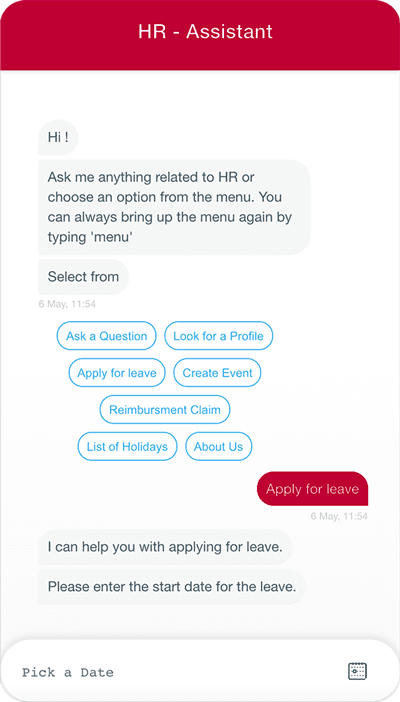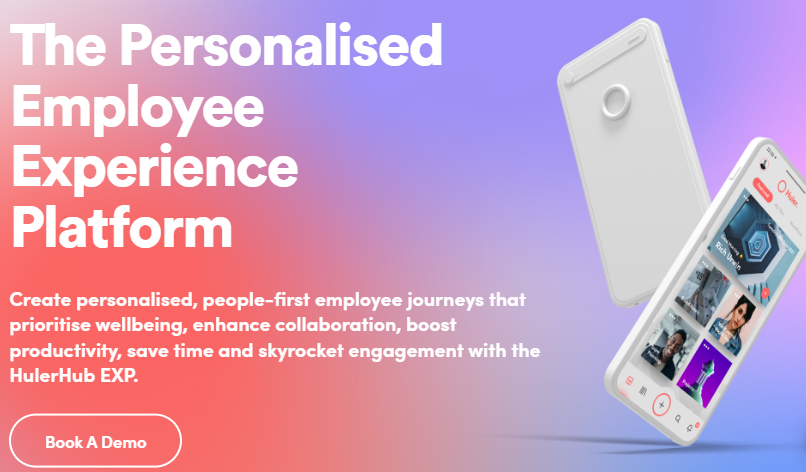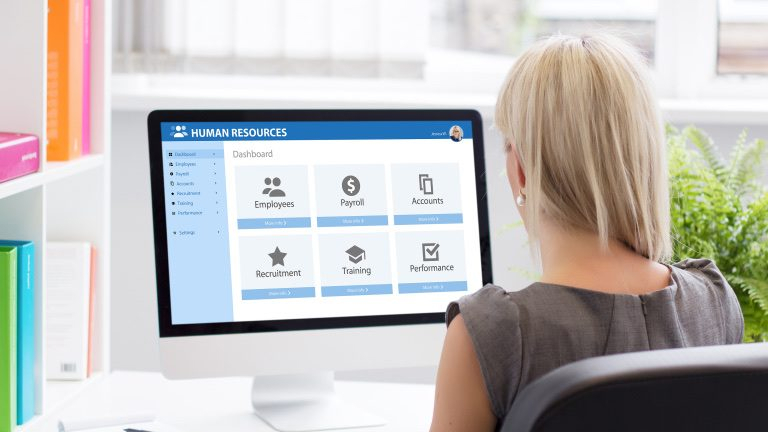“A company’s employees are its greatest asset, and your people are your product,” said Richard Branson. No business would disagree with this sentiment. Back when remote working was not in vogue, an advertising legend expressed similar views when he said, ‘The inventory goes down the elevator every night’. Semantics aside, enterprises agree that talent nurturing is key to business success. Ironically, technology has come to play a critical role in the ‘people’ business.
Digitization, new technologies, and consumer trends have resulted in the emergence of several industries and disciplines. HR Tech is one such and has gone beyond mere automation of processes to impact several aspects of the Human Resources function.
Enterprises are a lot more empathetic to find a fit between goals of the organization and of the talent community. A prudent mix of technology and people skills can play a role in strategy, operations, and talent management for organizations.
HR Tech in Strategy
Leveraging Data, Analytics, and Blockchain
HR systems store hundreds of data points, including resumes, employee profiles, payroll records, and performance reports. HR practitioners can use technology to make the data easy to access and add value to their initiatives.
Augmented analytics is an approach to data that automates insights using artificial intelligence, machine learning, and natural language generation. They use AI to analyze huge data volumes, spot trends, or keep tabs on crucial parameters. Then, using technology for NLP, the tools present the results in a conversational format that is simple to understand and further draw conclusions.
The rise of gig economy and two-sided marketplaces have heightened the need for Vendor Management Systems and Managed Service Providers. Blockchain integration brings a high level of security in managing a large amount of confidential data. Typical use cases include streamlining the payroll process, securing employee data (including CVs) and contract management.
Learning and Development
Employee training is increasingly moving into the digital sphere due to remote work. This change enables it to benefit from modern HR Tech innovations using gamification, AI, and AR/VR. Online employee training is becoming necessary as the field moves toward personalized, self-paced courses that accommodate different preferred learning styles of employees. Technology also opens a lot of opportunities for creating personalized career paths based on the potential of each employee, identifying skill gaps, and assessing work requirements.
Cloud-based HR
If a company has a remote team, there are good chances that the HR department will be remote as well. This is where all-encompassing cloud-based HR tools, which are the resource management of the future, come in. Existing all-in-one HR platforms, including payroll, benefits, time management, onboarding, and collaboration software, integrate many different, essential facets of HR management. As cloud-based HR software is scalable, it is perfect for firms that are expanding quickly because it enables HR experts to work with real-time data.
HR Tech in Operations
Advanced recruitment tools
The recruiting process is a tedious, time-consuming and eats upon the resource’s fruitful time handling critical chores that cannot be eliminated. Hence, tools like virtual reality, video conferencing, chatbots, job aggregators, recruiting CRMs enable effective screening of profiles, automating essential operational tasks. It helps make the recruitment process more streamlined, cutting unnecessary costs and time of the organization’s key assets.
Chatbots
A popular tool that can improve business operations is chatbots, commonly referred to as conversational user interfaces (CUI). Companies use them for internal purposes even though they are typically used in recruiting operations. Chatbots are increasingly being used to help with hiring responsibilities. Chatbots that have Natural Language Processing (NLP) can be used as the initial point of contact for job applicants. Deploying chatbots to improve employee service is another popular trend in technology.

Source: Engati
While human interaction is very vital in the interactions between two people, tech-enabled chatbots may be an option to solve problems where direct manual involvement is not required. Employee self-service portals and other interfaces for service delivery are starting to include chatbots. Employees can now turn to a chatbot for instant answers instead of asking HR questions and waiting hours or days for a response. Designing such chatbot systems calls for empathy sessions with end users to understand their pain points, use cases and emotions.
Virtual Reality (VR)
The real-world applications of VR in operations are in three key areas:
1. Recruitment: In the upcoming years, the way one’s company conducts recruitment may be significantly impacted by the use of VR tools. VR, for instance, is useful while recruiting for physically demanding positions where hiring managers can assess candidates’ abilities using VR simulations.
2. Onboarding: Just like the recruitment phase, companies can simulate training environments in VR that are more practical or less hazardous than those in the real world. Select roles in construction, firefighting, and similar fields come to mind.
3. Training: The third method businesses might use VR is to educate their staff. Its use in sexual harassment training is one example. An environment can be programmed to teach staff members how to deal with situations and take preventative measures.
HR Tech in Talent Management
Employee Experience Platforms (EXP)
A plush office, creature comforts, great landscaping, ergonomic seating, and opportunities for team bonding used to be hallmarks of a great employee experience in the pre-COVID era. But creating an ‘experience’ around the company brand for remote workers is incredibly challenging. However, the need for Employee Experience Platforms rose prior to the pandemic to address issues such as employee stress, productivity and affinity towards the organization.
In today’s world, ‘employee experience’ faces several unique challenges: remote working, entire digital onboarding, access to training material, knowledge sharing, setting KPIs and measuring them, imbibing the company culture with limited physical interactions and so much more. Also, gone are the days when enterprise software was meant to be dowdy and boring. Today’s employees are used to cutting edge digital experiences in virtually every sphere of their life – cab booking, banking or streaming. Why should they expect their office software be any less? Brands such as Huler have understood this well and provide stunning visual interfaces for sticky employee experiences.

Source: huler.io
Employee well-being
It is not rocket science to appreciate that employee wellness affects team productivity, individual job performance, and the organization as a whole. Several initiatives are aimed at assisting employees in avoiding burnout and caring for their physical and mental well-being, which will ultimately result in greater employee retention rates. As a result, systems for employee health and wellness will become more personalized. In 2021, McKinsey identified digital offerings including wearables and digital biomarker apps, ‘that could be helpful for companies implementing an employee well-being strategy’.
The blurring of work & personal life due to remote work has also caused mental stress. Wearables are increasingly used to monitor employee wellbeing and identify their health concerns. In niche industries where there is high hazard risk (such as exposure to chemicals) robotics is used to sanitize contaminated areas such as sewage pipes and tanks. Even heavy machine tools which traditionally needed manual labor to operate, automation can play a role to reduce human fatigue.
Employer Branding
Companies have been enhancing their reputation and image among potential and current employees by using social media for years. Growing job board sites that rate companies, and career sites that are social networking and HR software integrated are all examples of how technology may be helpful in employer branding. With the support of employee stories and job offers, hyper-targeted social media ads can considerably narrow the audience and connect with the right people. According to LinkedIn, 72% of recruiters concur that a company’s brand and reputation have a major impact on the hiring process as well as the organization’s financial performance, lowering the cost per hire and attracting more qualified candidates.
Embrace technology while remaining human
In the post pandemic world, businesses are grappling with the problem of major and unanticipated shifts in workplace models. A reassessment of one’s personal and professional priorities led to the “great resignation,” which included a record-breaking monthly high of 4.5 million US workers quitting their positions in November 2021 alone.
Digital solutions are being sought to address the challenges of managing teams, up-skilling and re-skilling employees, streamlining employee communication, and ensuring business continuity. The remote or hybrid working scenario has only highlighted the need for ensuring workplace agility as an imperative for enterprises.
There are web applications such as Volonte that empower employees to get in the right mindset, navigate change, and help their peers and the entire organization get better at change, too. A combination of technology, people, and behavioral science can make workplace and employee management a proactive, positive, and data-driven experience, thus creating a win-win situation for both the talent and the enterprise.
Contrary to popular belief, automation and other cutting-edge HR tech advancements may make the human component more important than ever. We might rapidly discover that these tools may be assisting firms in becoming more human in the process if we looked more closely at the potent capabilities, they provide us in terms of personalization or accessing the right talent. The main benefit of the newest HR Tech trends appears to be that people aren’t intended to be replaced entirely by technology. Instead, technology exists to support people in developing deeper relationships with their colleagues and clients, as well as to create more fulfilling careers.





